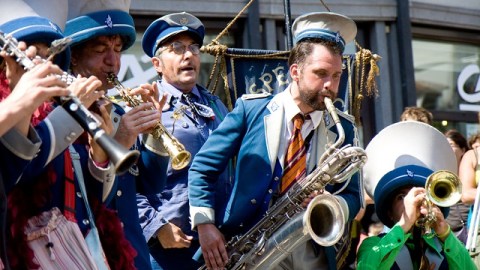Why Communal Performance Is Good For You

What’s the Latest Development?
Psychologist Robin Dunbar and his colleagues at the University of Oxford conducted several experiments with different groups of people to determine how their activities affected their pain tolerance. In three of the experiments, groups of people who were performing in some way — drumming together, singing during a church service, and dancing — were compared to groups who were not performing. The performing groups all had higher pain tolerances, which demonstrated that their bodies were producing endorphins, the chemicals associated with “runner’s high.”
What’s the Big Idea?
Various explanations have been given for where music — specifically, the act of producing music — came from. Regardless of whichever theory is correct, the researchers say their test results provide basic evidence that music helps generate the kind of feelings that promote cooperation, which was required for society to survive and grow. Plus it’s the active performance, not the music itself, that produces endorphins: In a fourth experiment involving groups listening to different speeds of classical music, pain thresholds did not change. The research results were published in the online journal Evolutionary Psychology.
Alain Lauga / Shutterstock.com





